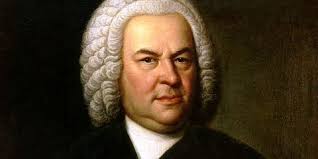Johann Sebastian Bach, one of the most influential composers in Western classical music, created an extensive catalog of works that continue to inspire musicians and scholars. Among his numerous compositions, Alla Breve (BWV 589) stands out as a fine example of his mastery in counterpoint and Baroque musical structure. This piece exemplifies Bach’s ability to blend complexity with clarity, showcasing the disciplined yet expressive nature of his musical language.
Origins and Context
Bach’s Alla Breve was composed during the early 18th century, likely during his tenure in Weimar (1708–1717) or Köthen (1717–1723). This period was marked by Bach’s deep engagement with both sacred and secular music, and his fascination with Italian and French styles influenced his approach to composition. The title Alla Breve refers to a time signature (cut time, or 2/2), which emphasizes a brisk, flowing motion typical of certain dance forms and fugal writing.
Musical Structure and Characteristics
Alla Breve is a fugue-like composition written for the organ, following the principles of strict counterpoint. It employs an imitative texture where the main theme is introduced and subsequently developed across different voices. The piece’s structure reflects Bach’s deep understanding of polyphony, with intricate interweaving lines creating a seamless yet sophisticated soundscape.
Harmonically, the work remains rooted in the Baroque tradition, utilizing sequences and modulations that reinforce its forward momentum. The cut-time signature contributes to the lively, buoyant character of the composition, making it a particularly engaging piece for organists and listeners alike.
Influence and Legacy
Alla Breve exemplifies Bach’s ability to merge technical precision with expressive depth. Though not as widely known as some of his larger works, such as The Well-Tempered Clavier or the Brandenburg Concertos, this composition remains a favorite among organists due to its clarity, rhythmic vitality, and contrapuntal brilliance.
Bach’s Alla Breve has also served as an educational model for students of counterpoint and Baroque composition. Its elegant yet rigorous construction offers valuable insights into the techniques that defined 18th-century keyboard music. Additionally, its influence can be traced in the works of later composers, particularly those who admired Bach’s contrapuntal mastery, such as Ludwig van Beethoven and Johannes Brahms.
Conclusion
Johann Sebastian Bach’s Alla Breve is a testament to his genius as a composer and his enduring impact on the world of classical music. With its lively rhythm, intricate counterpoint, and compelling harmonic structure, this piece continues to captivate audiences and musicians alike. Whether studied as a model of Baroque composition or performed as a vibrant organ work, Alla Breve remains a shining example of Bach’s unparalleled artistry.


Comments are closed